“I hope my work is recognizable as being by a woman, although I would certainly never make it deliberately feminine in any way, in subject matter or treatment. But if I speak with a voice that is mine, it is bound to be a woman’s voice.”. Isabel Bishop
March is the month of women and that is why in this article I wanted to research the role of women in the art of painting, my discipline. I hope it can help you understand a little more about the female art world.
Facts about the role of women in art
In May 1984, on the occasion of an exhibition organized by the Metropolitan Museum in New York, a group of artists pointed out that of the 169 artists present there, only 10% were women; a quick scan of the collections of other great American museums was equally bleak.
This is how “Guerrilla Girls” was born, which reveals that less than 5% of the artists in the MET’s collections were women but 85% of the nudes are female.
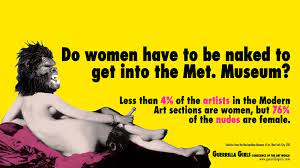
Manifesto Guerriglia Girls
The 2005 Venice Biennale poster reported an even lower presence of female artists in the MET of 5% to 3%.
After all, reality is before our eyes every day even in the culinary sector. Out of 130 chefs, only 5 women can boast 3 Michelin stars. Just 3.84%.
On the contrary, we can boast of a number of home cooks of several billion housewives.
Women and earnings in the art world
In 2018, a study revealed that women in the art world earn even less than men.
The study documented a 47.6% gap between the auction prices of paintings made by men and those made by women.
Therefore, it is not surprising that in the 95 most expensive objects ever sold at an auction, a female artist does not even appear, compared to a large number of female nudes, including the second (Picasso’s Women of Algiers) and the third (Lying Nude) by Amedeo Modigliani.
The most expensive work in history ever done by a woman is ranked 96: the work is by Georgia O’Keeffe, it is Jimson Weed/White Flower, auctioned in 2014 by Sotheby’s for $ 44.4 million.
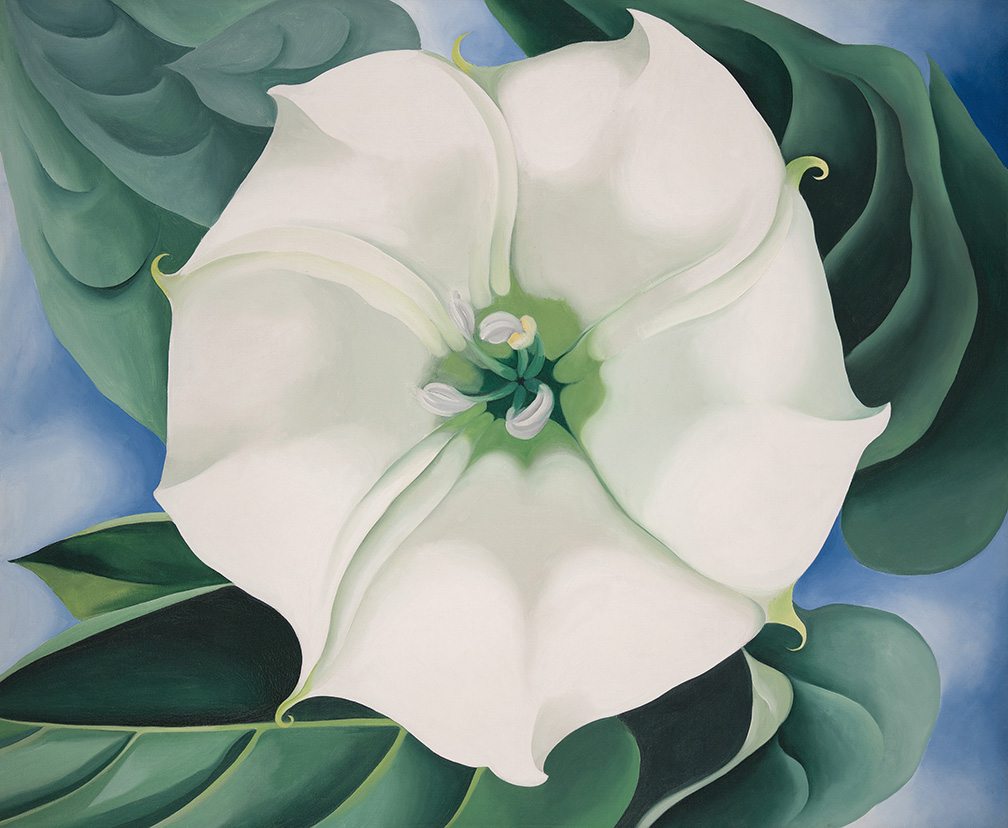
Jimson Weed / White Flower No.1
“Sono sempre stata terrorizzata in ogni momento della mia vita ma non ho mai permesso che questo mi impedisse di fare la sola cosa che volevo fare”. Georgia O’Keeffe
Gender differences increase at the top of the pyramid. In research based on data provided by ArtFacts, German art sociologist Katrin Hassler reports that in the global ranking of the top 100 artists, gender disparity reaches the highest percentage (only 12.6% of artists listed are women),while it decreases as the pyramid widens its base.
Women in the Italian art scene
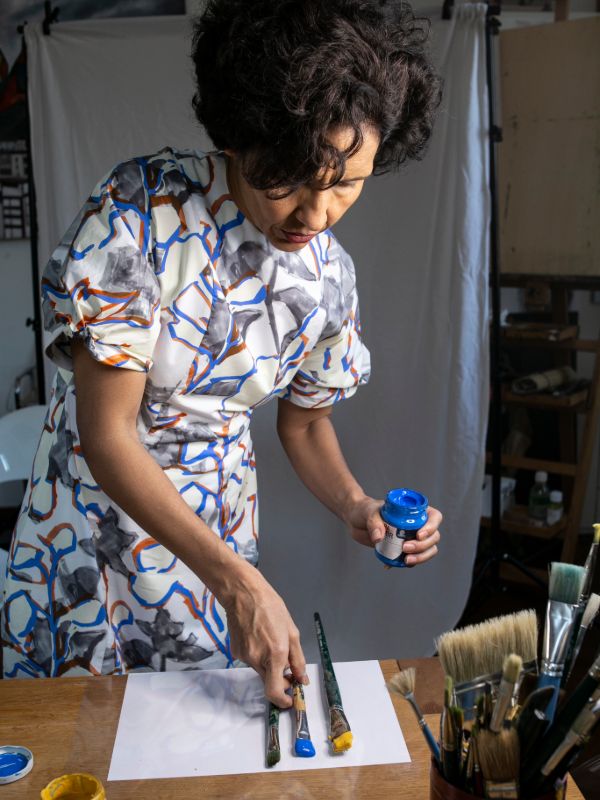
In the Italian art world there is a lack of updated data regarding the presence of women in the art field. However, I did find a research from Kooness, a platform born in Milan in 2015, that clarifies how:
The “average price” for a male artist work is about 3700 euros, while a woman gets let´s just say just over 2900 euros. These bleak results should not be attributed to fewer female artists.
And if we talk about awards (among the most important: the Turner Prize, the Mac Arthur, the Hugo Boss, the Bucksbaum Award and the Duchamp Prize), of the 406 winners only 37.7% are women. It follows that 62.3% are obviously men.
The exhibitions of female artists
The women who attend the academy of fine arts are 66% compared to 33% of the male artists. At art galleries their presence drops to 25%, and it drops to 19% in relation to personal exhibitions in institutions and reaches the minimum point of 13% in the Italian Pavilion of the Venice Biennale.
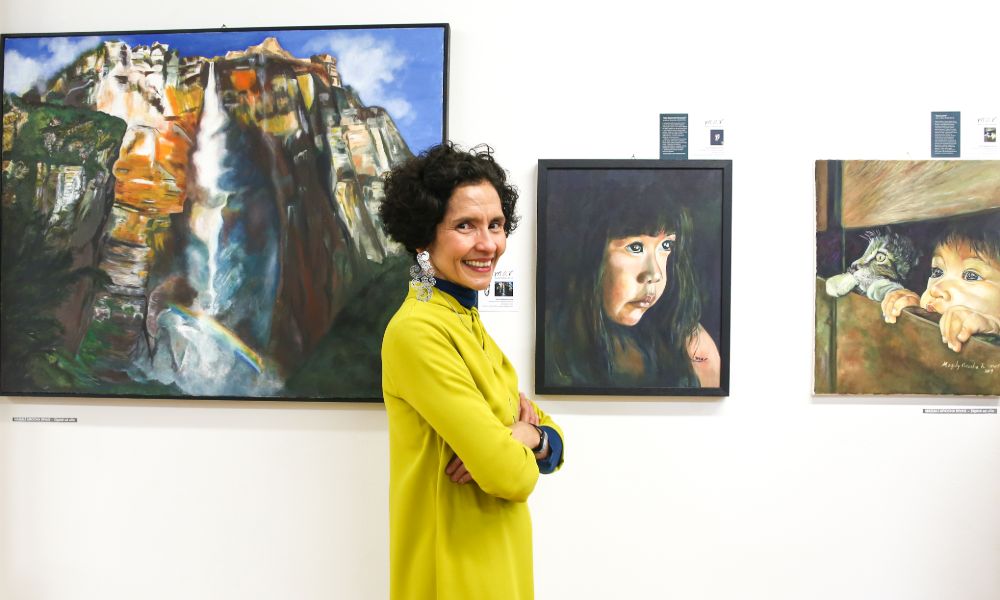
In the investigation “Women Artists in Italy” (2018) that studies only the data related to the offer of group and personal exhibitions, it shows that:
- Solo exhibitions in modern and contemporary art galleries see 75% of male artists versus 25% of female artists.
- In modern art exhibitions the percentage improves slightly: 68% male artists; 32% female artists.
Women artists in the labor field
The most alarming data from NABA (Survey of the New Academy of Fine Arts, by its acronym in Italian) refers to the exclusion factor: 58% of women states having found episodes of social exclusion and / or professional exclusion in the Italian art system and indicates economic status as the most relevant factor of exclusion, even before gender.
Now the question I ask is simple: do we need “pink quotas” in art as well? In my opinion yes: without quotas it will be more difficult to emerge.
“Andiamo avanti, corriamo avanti, siamo in prima linea!” Nancy Spero
Many women have brought the situation to light and denounced discrimination. Among them:
- Judy Chicago (Chicago 1939), American artist who fought for the recognition of the role of women in art;
- Nancy Spero (1926-2009) pioneer of feminist art and Chiara Fumai(1978-2017), Italian artist who put the role of women at the center of their performances.
Now we must ask ourselves whether the situation we have just outlined is the result of a stratification over the centuries of the role of women in general and of art in particular. For a long time, female art has been ignored without any differentiation of time or place.
It was only in the 1960s that some studios remind us of artists such as Sofonisba Anguissola, Artemisia Gentileschi or Frida Kahlo. In my article women artists in the history of art ➡️https://magalyarocha.com/donne-artiste-nella-storia-dellarte/ I walk the hard path towards the emancipation of women artists.
To date, the gap between male and female artists remains almost insurmountable. There is a change of course only when the woman becomes an object of art.
What do I think about the role of women in art?
After analyzing history, data and facts, it is clear that the role of women must change in culture and institutions, because it is a much broader issue.
Although interest in women’s artwork is apparently growing in the auction world, the truth is that most women are underpaid and often have to do a second job as well. And take care of children and the elderly.
It is obvious that in this context they have fewer opportunities to appear in galleries, frequent important venues and promote their own art. In short, art is not an easy field for women artists, art critics, art historians, curators, or gallery owners. There is still much left to do.
Especially at the Italian level. In fact, Italy ranks 82nd, immediately after Mexico, in the 2017 Global Gender Gap Report based on indicators such as political participation, education, well-being, empowerment.
There are some positive signs in the art market. In fact, as we read in Barnebys Magazine:
“Sebbene nessuna donna sia (ancora) nella lista degli artisti più costosi all’asta, le opere di artisti femminili sono sempre più richieste e raggiungono cifre sempre più alte all’asta”.
You can discover “the 15 most expensive female artists ever” here ➡️ https://www.barnebys.it/blog/le-15-artiste-donne-piu-costose-di-sempre
If you wish, write me your opinion on this matter➡️ .
I will be grateful to you for helping me enrich my content.
Continue reading my blog and follow me on my social channels Facebook, Instagram, Pinterest, Youtube
Sources:
”International Survey of Painting and Sculpture”, MET; May 17, 1984
Gender Gap: The role of women in the world of art, https://www.barnebys.it/blog/gender-gap
Is Gender in the Eye of the Beholder? Identifying Cultural Attitudes with Art Auction Prices (Is gender in the eye of the beholder? Identification of cultural attitudes with the prices of art auctions)
“Sistema e mercato dell’arte. Le donne in cifre”, edited by Silvia Simoncelli,
https://www.kooness.com/art-gender-debate Awards, galleries, quotations, perception in terms of public: these are the criteria used by the platform on 440 artists and over 2700 works. Reasoning based on the price of individual jobs.
Declaration of National Museum of Women in the Arts 2018
Silvia Simoncelli, Caterina Iaquinta ed Elvira Vannini: “Donne Artiste in Italia. Presenza e Rappresentazione”, NABA, 2018 https://www.ilsole24ore.com/art/le-artiste-italia-gap-che-rappresenta-un-opportunita-AE6gGPhG

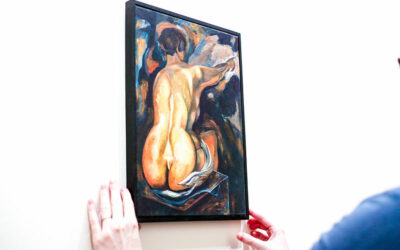
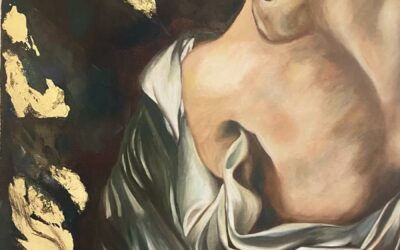
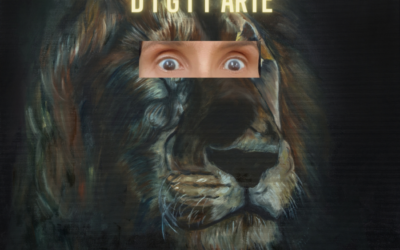
0 Comments